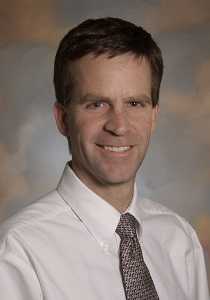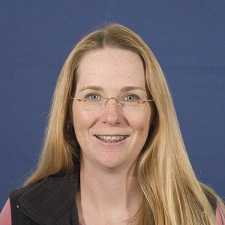NORA Transportation, Warehousing and Utilities Sector Council Archive
NOTE: This page is archived for historical purposes and is no longer being maintained or updated.
Letter from the Manager, TWU Sector Program
February 21, 2013
Dear Transportation, Warehousing and Utilities Sector Stakeholders:
The Transportation, Warehousing and Utility (TWU) Sector encompasses more than 7 million workers who provide vital and diverse services to the nation. While employment in the TWU sector can be rewarding and fulfilling, the hardworking men and women in this sector face a myriad of workplace hazards that pose threats to their well-being, including injury and health hazards, and sometimes difficult work conditions that can make it difficult to maintain health.
These pages provide information on the NIOSH TWU Sector Program and the NORA TWU Sector Council that collectively utilize partnerships to identify and prioritize research needs, stimulate innovative research, and encourage science-based changes to improve the safety, health and well-being of TWU workers. As Co-Chair of the NORA TWU Sector Council, it is an honor and pleasure to work with the large number of stakeholders who are committed to ensuring that employment in the TWU sector is as healthful as possible. Each stakeholder brings unique perspectives, strengths and resources that collectively can lead to improvements in TWU worker safety, health and well-being.
There has been considerable progress in the approximate 5 years since the NORA TWU Sector Council was formed, and I look forward to continued advances in the years to come. NIOSH and partners have helped elucidate safety and health hazards and identified promising strategies for improving TWU workers’ safety and health. Ongoing research holds great potential for filling additional knowledge gaps and identifying science-based interventions. NIOSH and partners will continue to work together to foster research on the most compelling safety and health concerns for TWU workers, and to ensure that research findings are put into practice for the betterment of TWU workers.
Sincere thanks to all who have contributed to-date to advancing the science, and putting science into action, to improve TWU workers’ safety, health and well-being. For those who have not previously been engaged with NIOSH or the TWU Sector Council, we invite you into the fold. While there are limits on Sector Council membership, there are additional ways to contribute as Corresponding members and partners in research and outreach. Please contact any of the program leaders below if you would like additional information or would like to join the effort. As well, please sign-up to receive updates on important TWU research and prevention at http://twitter.com/nioshtransport
Dawn Castillo, MPH
TWU Program Manager and Council Co-Chair
Director, Division of Safety Research, NIOSH
NORA
The National Occupational Research Agenda (NORA) is a partnership program to stimulate innovative research and workplace interventions. In combination with other initiatives, the products of NORA are expected to reduce the occurrence of injuries and illnesses at work. NORA recently entered its second decade (2006-2016) embracing the concept that occupational research and translation efforts be oriented around specific industrial groups or sectors.
TWU Sector
The Transportation, Warehousing, and Utilities (TWU) Super Sector is one of ten such groupings within NORA. The Transportation Sub-sector covers all modes of transporting passengers and cargo by air, rail, water, road, and pipeline. The Warehousing Sub-sector consists of establishments engaged primarily in the storage of goods. The Utilities Sub-sector covers electric power, natural gas, alternative sources, water, sewage, and other systems.
NIOSH TWU Program
The overall mission of the TWU program is to ‘implement a focused program of surveillance, research, and the development of interventions that leads to the mitigation and prevention of work-related injuries, illnesses, and fatalities in this broad industry sector.’ The NIOSH TWU program sets priorities for NIOSH work in the sector, monitors NIOSH-funded TWU projects and encourages new NIOSH projects to address program priorities. The program also uses some NIOSH resources to facilitate the work of the NORA TWU Sector Council. The TWU program tracks impacts achieved by NIOSH projects and partner efforts in support of sector goals.
Motor vehicle crashes are the 1st or 2nd leading cause of death in every industry sector, including TWU. NIOSH has established the Center for Motor Vehicle Safety (NCMVS) to coordinate efforts to research, prioritize, and identify interventions across all industries. The TWU program collaborates with the NCMVS to develop interventions and injury prevention strategies for TWU workers who are at highest risk of fatality or injury from motor vehicle crashes.
NORA TWU Sector Council
The NORA TWU Sector Council sets national priorities and facilitates the development of partnerships to improve occupational safety and health in the TWU Sector. The Council is made up of approximately 25 individuals who represent diverse interests from academia, state, federal, and local governments, labor unions, non-profits, and trade associations. The Council is co-led by a NIOSH representative and an individual from outside of NIOSH. The Sector Council also draws on an active group of Corresponding Members who participate in ad hoc working groups to help implement action plans developed for specific priority goals. Because the TWU Sector is so diverse, Corresponding Members are valuable sources of specialized knowledge that may not reside within the Council itself.
The Council has been engaged in a broad range of activities over the past several years. These activities have included the conceptualization and development of a national strategic agenda, selection of priority goals and the initiation of strategies to implement priority goal-specific action plans. The chart below summarizes the broad scope of these activities.
| Organization | Strategic Agenda Development | Agenda Implementation | Ongoing Activities | |
|---|---|---|---|---|
| Apr 2006–Sep 2007 | Oct 2007–Jul 2009 | Aug 2009–Dec 2009 | Jan 2010- | |
|
NORA Symposium: Second Decade of NORA launched using a sector-based approach
|
Mission statement defined; OSH issues refined
|
Strategic Agenda finalized and posted on NORA webpage
|
Conduct subsector meetings
|
Warehousing – Jul 2010
Trucking – Feb 2011 Air – Feb 2012 Transit – Feb 2013 |
|
Update TWU webpage: post products, outcomes, and impacts
|
Fall 2011, ongoing
|
|||
|
Town Hall meetings; Key occupational safety and health (OSH) issues defined
|
Strategic goal work groups identified; ‘Draft’ agenda and research goals prepared as strategic, intermediate, and activity-output goals
|
Priority goals developed for multiple sub-sectors
|
Ensure Strategic Agenda accurately reflects achievable goals
|
Ongoing
|
|
Monitor TWU goal-related work of NIOSH and partner organizations
|
Ongoing
|
|||
|
Potential partners identified
|
Public comment and partner input received
|
“Action plans” initiated for selected focus areas
|
Facilitate progress on current action plans; encourage new ones
|
Ongoing
|
|
Solicit new partners
|
Ongoing
|
|||
|
Outreach through conference participation
|
Ongoing
|
Sector Council and Program Leadership Information
Dawn Castillo, MPH
TWU Sector Program Manager and Council Co-Chair
CDC/NIOSH – Director, Division of Safety Research
Dcastillo@cdc.gov, (304) 285-5894

Dawn Castillo is the Director of the Division of Safety Research at the National Institute for Occupational Safety and Health (NIOSH) in Morgantown, West Virginia. The Division serves as the focal point for traumatic occupational injury research and prevention programs at NIOSH. The Division also houses the NIOSH Center for Motor Vehicle Safety.
Ms. Castillo began her NIOSH career in 1991 as an epidemiologist. Between 1998 and 2011, she served as Chief of a Division Branch responsible for occupational injury data collection, analysis and interpretation. Ms. Castillo was the fourth recipient, in 2000, of the James. P. Keogh award, an annual NIOSH award recognizing a current or former NIOSH employee for exceptional service to the field of occupational safety and health. Ms. Castillo was appointed as Director of the Division of Safety Research in July 2011. Ms. Castillo assumed responsibilities as TWU Sector Manager and Council Co-Chair in October 2012.
Ms. Castillo has authored numerous articles, book chapters, and technical documents on a variety of occupational injury topics, including occupational injuries among young workers, older workers, fire fighters, and workplace violence. Ms. Castillo received her B.S. in Biology from the University of California, Irvine and her Masters of Public Health in epidemiology from the University of California, Los Angeles.
Eric Wood, MD, MPH
TWU Sector Council Co-chair
Associate Director, Occupational Medicine Residency Program, Clinical Instructor
Rocky Mountain Center for Occupational and Environmental Medicine
University of Utah
Eric.wood@hsc.utah.edu , (801) 581-7780

Eric Wood, MD, MPH is Residency Program Director and Assistant Professor at the Rocky Mountain Center for Occupational and Environmental Health (RMCOEH) at the University of Utah in Salt Lake City, Utah. He is a graduate of the University of Utah School of Medicine, and he completed his Masters of Public Health (Industrial Hygiene) at the University of Hawaii. He performed residency training in Family Medicine at the University of Nevada, Reno, and Occupational and Environmental Medicine at the University of Utah. He is Board Certified in Preventive Medicine (Occupational and Environmental Medicine) and Family Medicine. Prior to joining the faculty at the University of Utah he worked as an attending physician for Intermountain Healthcare, and as a professional industrial hygienist for both private consulting, and for Utah OSHA.
Dr. Wood is actively involved as a researcher on two large scale prospective cohort studies investigating causes of musculoskeletal disorders. He was appointed as the inaugural medical fellow for the Federal Motor Carrier Safety Administration and is performing research on health concerns of truck drivers. His clinical interests include occupational injury and illness management and prevention, and occupational and environmental exposure assessment and evaluation. Dr. Wood teaches several courses in the RMCOEH Occupational Health Curriculum, and he mentors occupational medicine residents and graduate students.
W. Karl Sieber, PhD
TWU Sector Program Coordinator
CDC/NIOSH – Division of Surveillance, Hazard Evaluations and Field Studies
WSieber@cdc.gov, (513) 841-4231

W. Karl Sieber is a Research Health Scientist in the Division of Surveillance, Hazard Evaluations, and Field Studies at the National Institute for Occupational Safety and Health (NIOSH) in Cincinnati, Ohio. He received the Ph.D. and M.S. Hyg. in Biostatistics from the University of Pittsburgh Graduate School of Public Health and has been with NIOSH since 1982. His fields of expertise include Statistics, Epidemiology, survey design, and Industrial Hygiene.
Dr. Sieber is Project Officer for the National Occupational Research Agenda (NORA) project, ‘National Survey of Long-haul Truck Driver Health and Injury’. He represents NIOSH on the Transportation Research Board (TRB) Committee on Truck and Bus Safety. His research has resulted in multiple journal articles, reports, and other technical documents. His research on exposure to metal-working fluids was awarded Honorable Mention in the 2002 Alice Hamilton Award for Occupational Safety and Health in the Engineering & Physical Sciences Category. This award recognizes the scientific excellence of technical and instructional materials by NIOSH scientists.
Dr. Sieber’s interests include the analysis of health and injury characteristics of the TWU sector’s work force: methodology for data collection, analysis, dissemination methods, and intervention strategies.
Jennifer E. Lincoln, BSF, MSSM
TWU Sector Program Assistant Coordinator
CDC/NIOSH – Division of Safety Research
JELincoln@cdc.gov, (304) 285-6185

Ms. Lincoln has been with NIOSH since 2003, as a Health Scientist in the Division of Safety Research (DSR) in Morgantown, WV. She has a Masters Degree in occupational safety and health from West Virginia University and is interested in motor vehicle safety, struck-by incidents, human factors, fatigue, training, and safety culture research. She is involved in the “Truck Driver Injury and Health Survey” and “Assessment Technology and Intervention for Package Drivers” research projects. She represents NIOSH on the Transportation Research Board Committees on Railroad Operational Safety and on Marine Safety and Human Factors. Ms. Lincoln is interested in identifying ways research in other sectors can be applied to improve TWU worker safety and health.
- Page last reviewed: March 14, 2013 (archived document)
- Content source:
- National Institute for Occupational Safety and Health (NIOSH) Office of the Director


 ShareCompartir
ShareCompartir